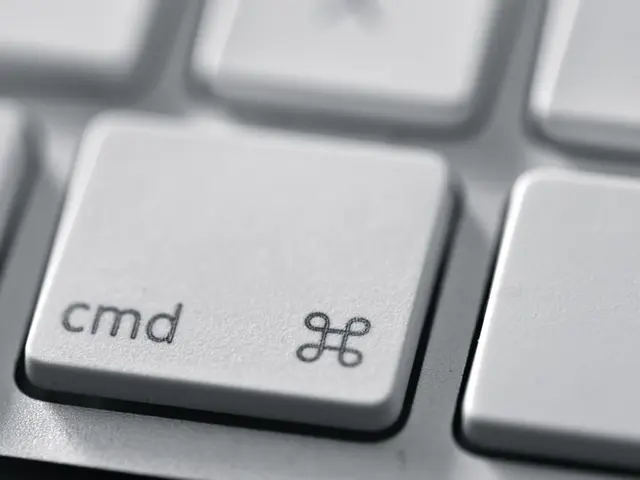SpaceX demonstrates the considerable dimensions of the novel grid fins on the Super Heavy rocket
SpaceX is gearing up for the 10th test flight of the Starship, the world's most powerful rocket, which is scheduled to occur this month from the Starbase site in Boca Chica, Texas [1]. This flight will mark a significant milestone, not just for SpaceX, but also for NASA's Artemis program, as the Starship's test flight will provide valuable data for future development and improvement of the Starship and Super Heavy rocket.
One of the key changes in the new design is the reduction of the number of grid fins from four to three. However, each fin has been made 50% larger and stronger with an optimized stainless steel construction [2]. The fins are now bulkier and have rounded front corners, arranged in a T-shape configuration. They are also relocated lower on the booster to better align with the tower’s catch arms and reduce heat exposure from the engines during stage separation [3].
These changes impact the booster's descent and landing by enabling better control at higher angles of attack, which improves aerodynamic stability and precision during atmospheric re-entry. The larger, stronger fins allow the booster to maneuver more effectively and help ensure a safer, more accurate landing, which is essential for booster reuse [2].
The redesigned grid fins are likely to debut in the 10th test flight. SpaceX recently unveiled these changes, and a photo shared by the company shows an engineer standing on one of the new grid fins to emphasize its size [4].
The grid fins act as aerodynamic control surfaces during flight, and they will enable the booster to descend at higher angles of attack during landing. This is particularly important for the "catch" maneuver where the tower deploys mechanical arms to secure the booster [5].
Regarding the Artemis III mission, while specific details on the impact are limited, these upgrades are expected to contribute to Starship’s overall improved performance and reliability. NASA has signed a deal with SpaceX to use a modified version of the Starship spacecraft for landing two astronauts on the lunar surface in the Artemis III mission, currently scheduled for 2027 [6]. Enhancements that increase booster reusability and landing precision will support more efficient and cost-effective launch and recovery operations crucial for NASA’s deep-space exploration goals.
In summary:
- SpaceX's redesigned grid fins for the Starship's Super Heavy rocket are larger, stronger, and fewer in number.
- The changes aim to improve lift and control, enabling descent at higher angles of attack, increasing aerodynamic control, and structural durability.
- The new positioning and structural integration likely enhance the mechanical reliability of the catch system that grabs the booster for recovery.
- The Starship's test flight will provide valuable data for the future development and improvement of the Starship and Super Heavy rocket.
- The upgrades are expected to contribute to Starship’s overall improved performance and reliability, supporting NASA’s lunar exploration by improving Starship’s reliability and reusability during launch and recovery.
Sources: [1] Space.com (2022) SpaceX Starship Test Flight 10: What We Know. [online] Available at: https://www.space.com/spacex-starship-test-flight-10-what-we-know.html [2] CNET (2022) SpaceX's Starship Super Heavy rocket gets a new grid fin design. [online] Available at: https://www.cnet.com/space/spacex-stars-new-grid-fin-design-for-super-heavy-rocket/ [3] NASASpaceFlight (2022) SpaceX's Starship Super Heavy to feature redesigned grid fins. [online] Available at: https://www.nasaspaceflight.com/2022/03/spacex-starship-super-heavy-to-feature-redesigned-grid-fins/ [4] TechCrunch (2022) SpaceX shows off redesigned grid fins for Starship Super Heavy booster. [online] Available at: https://techcrunch.com/2022/03/11/spacex-shows-off-redesigned-grid-fins-for-starship-super-heavy-booster/ [5] Space.com (2021) Starship's Grid Fin Design Explained. [online] Available at: https://www.space.com/spacex-starship-grid-fin-design-explained.html [6] NASA (2022) NASA and SpaceX Announce Human Landing System Partner for Artemis III Mission. [online] Available at: https://www.nasa.gov/press-release/nasa-and-spacex-announce-human-landing-system-partner-for-artemis-iii-mission
The redesigned grid fins on the Starship's Super Heavy rocket are bigger, stronger, and in fewer numbers, aiming to improve lift, control, and structural durability during the booster's descent and landing. These changes may also enhance the mechanical reliability of the catch system that recovers the booster. The upcoming test flight of the Starship will offer crucial data for further development and advancement of the Starship and Super Heavy rocket, potentially contributing to Starship's improved performance and reliability, essential for NASA's lunar exploration programs.




